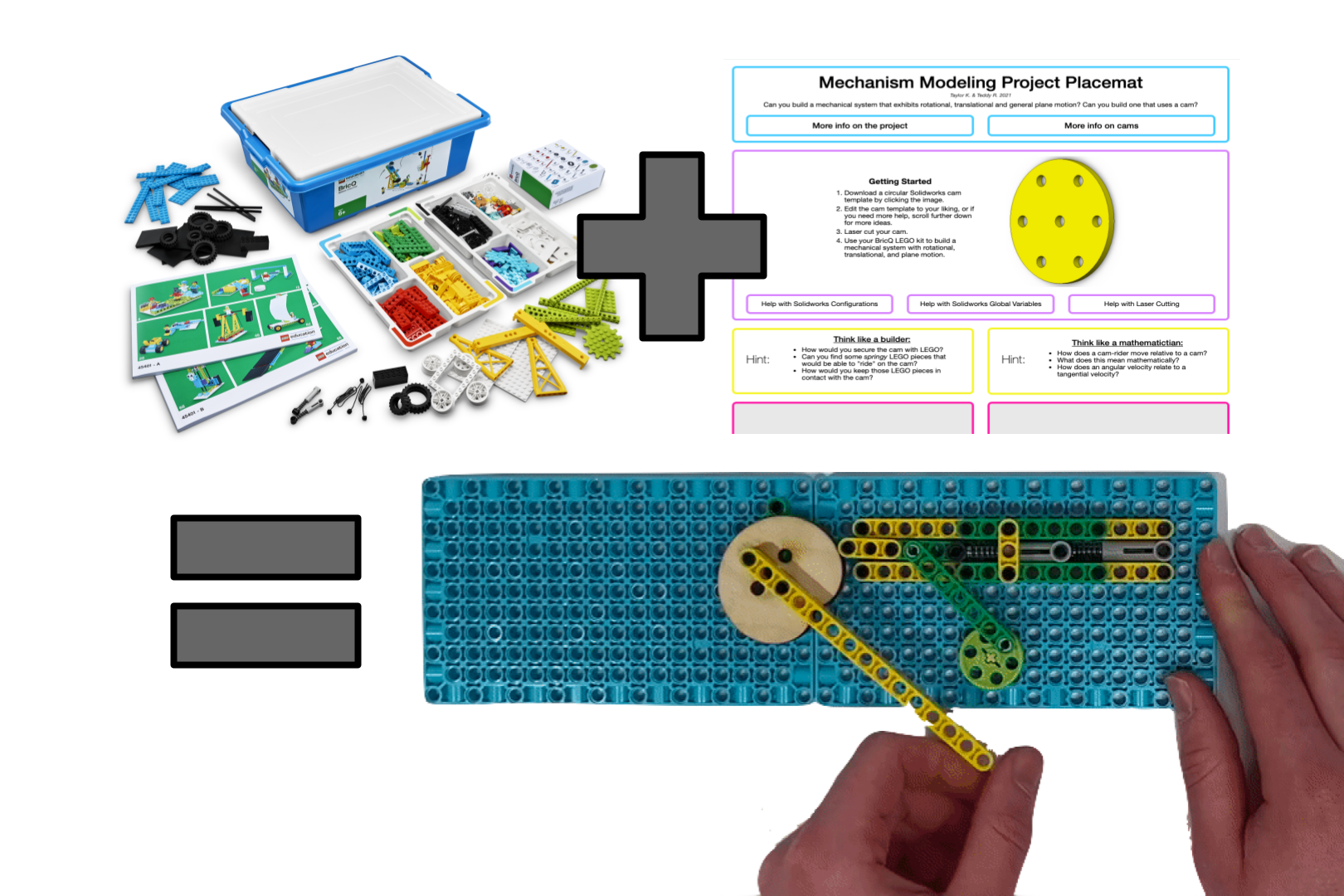Educational Experience for Dynamics
BackgrounD
In my inventive design class, my partner Taylor and I were tasked with designing an educational experience that would help sophomore mechanical engineers better understand the subject of Dynamics.
We had both taken the class, so we knew what parts of the class were difficult for us. We decided to hone in on a problem that I experienced in the class when working on the mechanical modeling project. See my kinematic sculpture. In this project, I learned a lot about making and modeling Dynamic systems, but I spent the majority of my time trying to design the parts in Solidworks, which made the project more difficult than it had to be.
Therefore, after a long brainstorm, Taylor and I set out to improve this project by creating an interactive, web-based placemat (a sort of project “guide” developed by the Tufts CEEO) that would help students make cool mechanisms that incorporated laser-cuttable unique cam designs. This website would be paired with a kit of lego pieces with springs to help them bring their designs to life.
We settled on cam designs as our focus because it is easy to design systems with rotational, translational, and planar motion if you start with a funky-looking cam as your actuator.
Pitch
We made a stop-motion video to pitch our idea the current instructors of the Dynamics class, Prof. Kristin Wendell and Prof. Hoda Koushyar. Profs. Wendell and Koushyar gave us some feedback on our pitch, emphasizing the use of Solidworks over Onshape (as that is the preferred CAD software for the MechE department) and laser-cutting over 3D printing (as it is more sustainable).
We took this feedback and began to develop our prototype.
Prototype
Over the course of our first week working on the project, we developed the prototype of the webpage that would become our interactive placemat. It was coded in HTML with Bootstrap 4.
Our prototype was slowly built up in a modular format. We wanted all of the elements of the placemat to look like they would in a static placemat, but with an interactive twist on each one. As a user scrolled down through our prototype, they would be able to open hints that would help them with both the design of the cams in Solidworks and the fundamental math that governs cam motion. At the bottom of the page were some hints containing advanced cam designs for students that were nervous about designing their own from scratch.
In our prototype, we emphasized keeping as many hints hidden as possible, so that students would only access them if they needed them. We wanted to encourage solution diversity by giving each student just enough information and Solidworks help to get them started, not enough to build their system for them.
user feedback
We tested our product with a freshman mechanical engineering candidate, and a sophomore who was currently taking Dynamics. We combined this feedback with more feedback from the professors of the course to develop a few key additions to the site:
A splash page with the motivation and goal for the project
A hint to help users laser cut their designs
A “getting started” module that broadly informs users of the design workflow
Advanced equation-driven cam designs
An example of a possible solution at the bottom of the page
Final product
The final product serves to reduce inequity between students with prior CAD experience and those who are new to CAD, specifically during the mechanical modeling project. Our product accomplishes this goal by providing all students with helpful resources, most notably cam templates ranging from simple shapes to equation driven curves. These templates reduce time spent working in CAD for the novice students, allowing them to come up with more complex designs for their mechanical models that are comparable to students with more experience.




